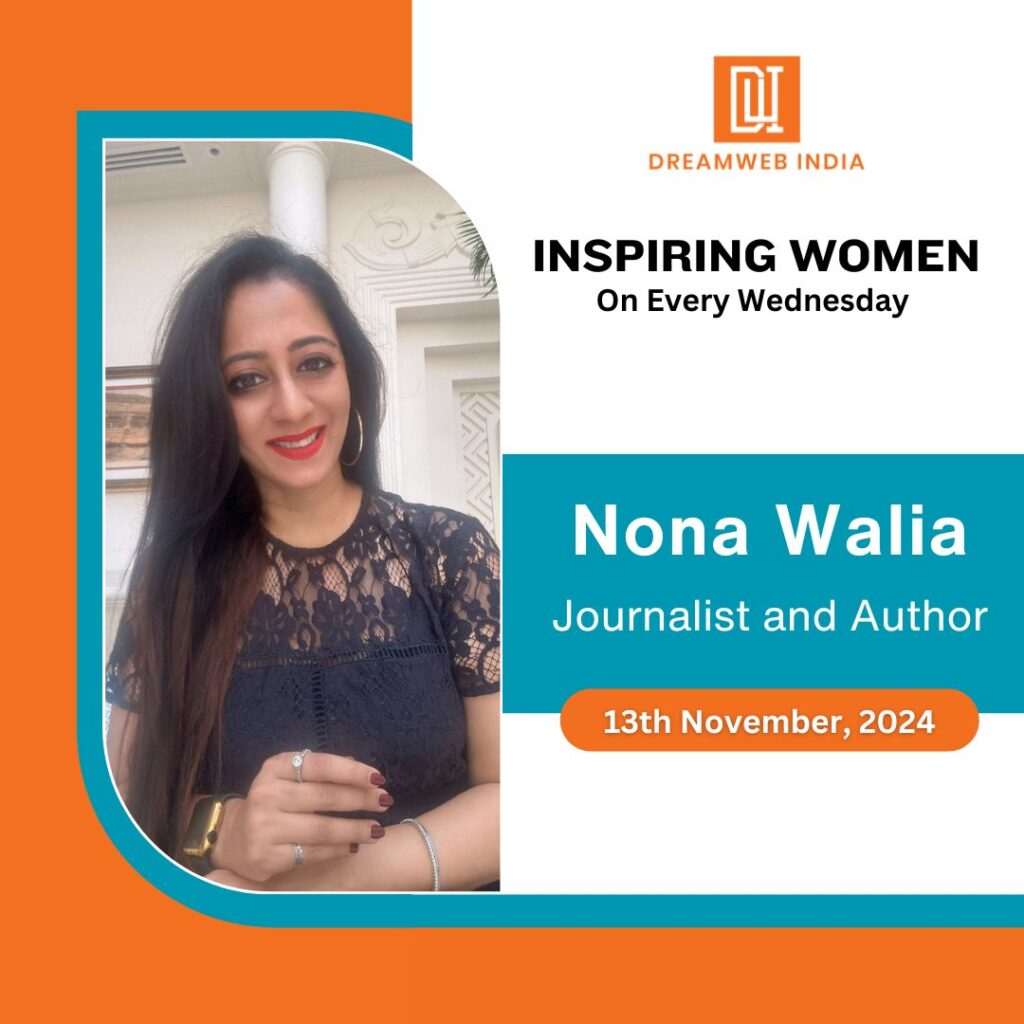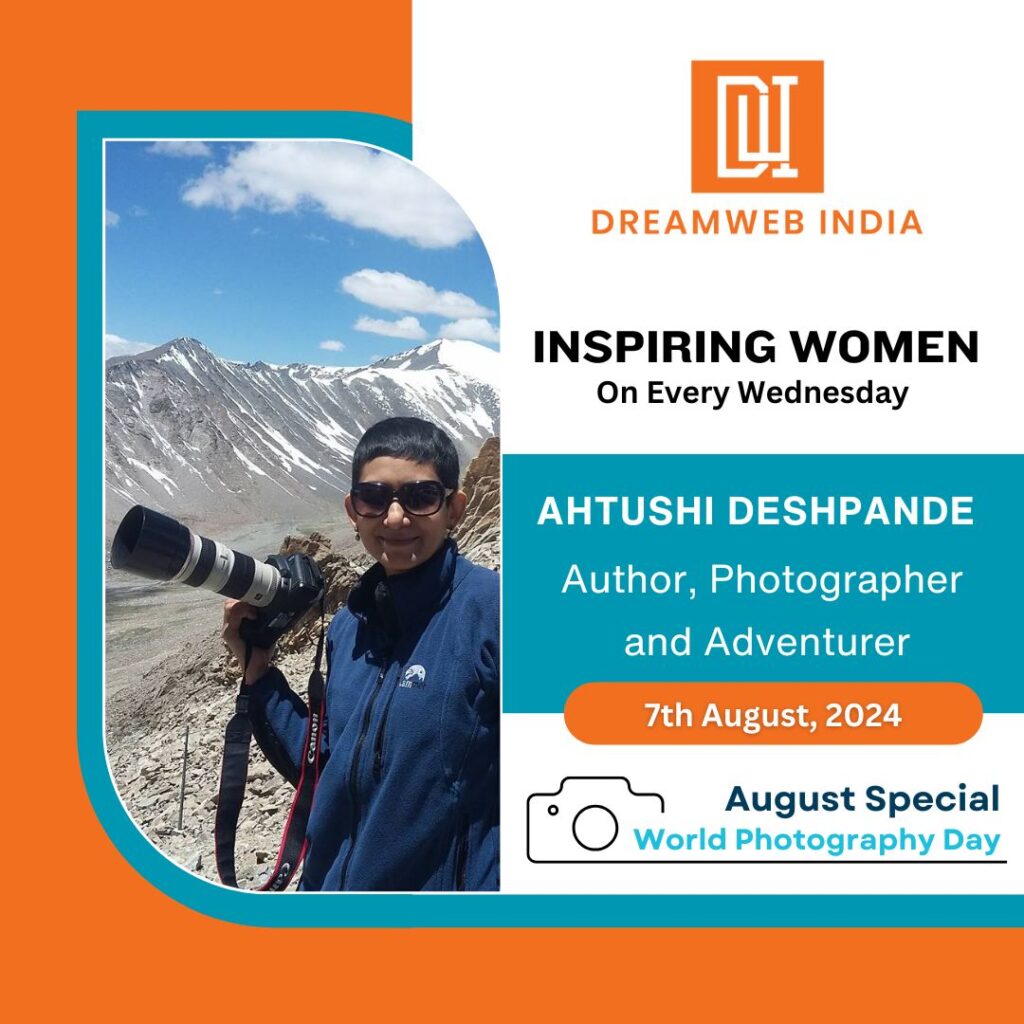Inspiring Women Every Wednesday: Nona Walia
India’s Notable Personalities by BusinessTalkz Magazine in 2024 She is an active member of the National Council, WICCI Arts National Leadership Council (2024). As part of the Women’s Indian Chamber of Commerce and Industry, Nona leads initiatives empowering women in Arts and Literature, helping to shape a global ecosystem that fosters creativity and collaboration across stakeholders and government initiatives. WICCI is a prominent national body championing women’s growth in the arts. In 2024, she was recognized as one of India’s Notable Personalities by BusinessTalkz Magazine and awarded the Top Voice Badge for content development on LinkedIn. A former Executive Editor of Conscious Carma, India’s first global e-magazine focused on Sustainability and Responsibility, Nona editorially highlighted issues surrounding Wellness, Sustainability, and Mental Health. Her current research area includes Wellness at Workplaces — exploring how fostering healthy, supportive environments is key to future workplace success. Nona is also a motivational expert, helping people live their best lives. A certified Wellness Warrior and blogger, she shares insights on health, well-being, and personal growth through her blog and YouTube channel. She has completed a Science of Well-Being course from Yale University and continues to inspire others through her wellness-focused content. Published Works & Contributions In addition to her books, Nona has written for Thrive Global, Entrepreneur Magazine, and Her Circle, contributing articles on mental well-being, personal development, and societal challenges. Her insights have also been featured in prominent publications like Midday Mumbai, where she was recognized as an inspiration for mental health. Nona’s journey in journalism spans over 24 years as a Senior Assistant Editor at The Times of India, where she worked across multiple platforms including Times Life, Delhi Times, Economic Times, and Femina. She was also the editor for Rouge, a section focused on women’s empowerment. Her work has included breaking news, features, headline writing, and media relations, and she has coordinated the Times supplements across major cities. With a deep expertise in both print and digital media, Nona Walia continues to use her platform to advocate for mental wellness, sustainability, and women’s empowerment in arts and literature. Let’s Get Inspired In Conversation with Nona Walia – Preeti Juneja Q. Looking back on your journalism days, what topics did you enjoy covering the most? How does that compare to the content you curate now for social media? We live in times of rapid and dynamic change. Content is fast changing. Creating content for newspapers was a different experience. It was the golden period of lifestyle; the economy had opened up, and we were exposed to a different and new world. It was interesting meeting people and interviewing them — the newsmakers, changemakers, the pathbreakers. It was exciting being in the middle of the adventure of a newsroom. The pace and energy were always pulsating with action. Cut to now, writing on social media is a different experience. The reaction is immediate. The response is intense. You interact with people immediately. The wheels of content are always turning and churning. What works one day won’t work the next day. The algorithm is more dynamic. But a lot of stuff that gets boasted isn’t really good content. The authenticity of posts can be manipulated, which challenges authentic content creation. Q. How does someone even begin With so many new trends emerging in the wellness space? Tell us about your journey of cleansing the mind and owning your energy to bring the magic from within you. Everyone has their own unique personal wellness story. We live in extremely challenging times, and nothing is given. The wellness space is extremely new yet getting cluttered. Everyone needs to create their own wellness plan. Wellness is the core of my work, be it wellness at work, mental health, own your energy or creating their magic within — all my current writings are born from the will to bring change in people’s wellness curve. I believe that collectively, we can make a difference to make the world better. Quality of life will be directly dependent on the wellness quotient. Workplaces are also crucial spaces to make wellness more inclusive. Q. The hashtag “Women Empowering Women” is widely popular, but have you encountered real-life examples, either in your personal or professional life, that you’d like to share to inspire and encourage this movement? Right now, it’s a new movement—workplaces in the 90s or 2000s or even up until Covid did not resonate with this idea. If women were empowering women, there were some women bringing women down. I think this new wave comes with the philosophy that — all women can rise together. I think it’s powerful. I’ve experienced powerful women who helped me rise, and I’ve also experienced women who made me sink. You just have to find the right tribe. I hope this movement finds more power; more women can relax and not feel triggered or threatened. Q. Do you think influencer marketing is here to stay? What are your thoughts on its future? I’m highly sceptical of influencer marketing. I’d instead give all my vote to — more authentic marketing. We all take influencer marketing with a pinch of salt these days. The curve might soon change. I hear that influencer marketing is a rage now. Rapid-Fire: 1. What was the turning point in your life? When I lost my father. 2. Tips you would like to give budding writers? Write for yourself. 3. One area of interest you feel deeply connected to and continuously explore? Sustainability and wellness; Arts 4. As a solid media and communications professional, did a corporate communications or public relations role ever cross your mind? I do have a degree in Advertising & Public Relations. But I never really got a chance to be on the other side of things. 5. What quality can one develop over time that will help in life? Invest in Yourself. One-Liners: 1. A dying art that you would like to promote: Handicrafts — anything that is created with hands is




